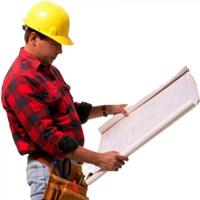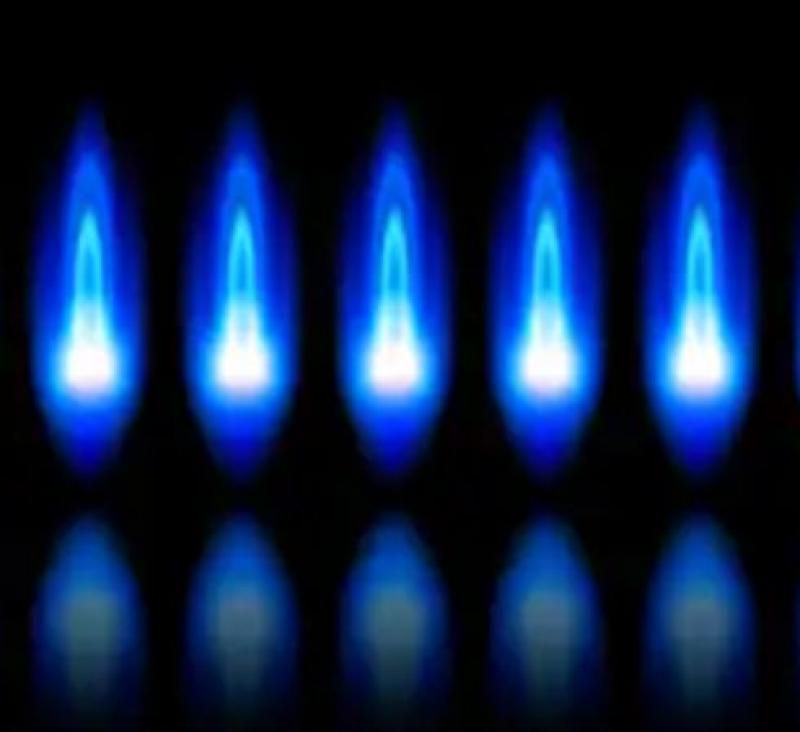Gas Furnace Dos and Do Nots
by Guest Post on May 5, 2012
Gas Furnace Do's
- Change the Air Filter Regularly
- Check the fan belt to proper tension and wear
- Check the fresh air intake grill
- Properly service the furnace before the start of the heating season
Don't
- If the spill switch trips do not bypass the safety control correct the venting problem.
- Over tighten the fan belts, the belt should be just tight enough not to slip.
- Adjust the gas regulator pressure setting
- Block off fresh air intake. (If the furnace can't get its own air, it will take yours)
What is Proper Service
Furnace Temperature Rise: Most Residential furnaces are designed to work with a 40°F -60°F Temperature Rise (Supply Air Temperature - Return Air Temperature ), check the nameplate of your furnace for its design temperature.
Stack Temperature: The temperature of the flue 18" from the furnace should be the least 225°F. If it is lower than this then the flue gas will drop below the dew point more it vents from the top of the chimney. This will cause condensation in the chimney. This moisture is very acidic and will quickly damage the chimney.
Gas Manifold Pressure: The pressure on the gas manifold determines how much fuel your furnace will burn. Even a slight change from the design pressure can have a big effect on the performance of the furnace. This should only be tested by a licensed gas fitter, and at the original startup of the furnace. This test can also be done by clocking the gas meter, with only the furnace burners running.
Chimney Draft: The draft up the chimney should be at least -0.02" w.c. with all gas appliances running, all exhaust fans running. And all the windows and doors closed to the house. If the Draft is less than -0.02"w.c. additional Fresh air must be brought into the house. If the draft is greater than -0.05" can reduce the appliance efficiency by allowing the flue gases to pass too quickly through the heat exchanger.
CO Test exhaust: Test the flue gas for Carbon Monoxide. A properly set up burner should produce less than 10 PPM., high efficacy furnace will often produce more. If more than 50 PPM then the burners should be removed, cleaned, and set up, If greater than 300 PPM, repairs must be done ASAP. If higher than 500 PPM the furnace must be shut down until repairs are made.
Visual Inspection of the heat exchanger: Visually check the interior and exterior of the heat exchanger wear possible. Most of the heat exchanger is hidden from view, but the area that can be seen is a good indicator of the rest of the heat exchanger. The older or suspicious heat exchanger can be tested by smoke, or sulfur, or cutting in an inspection door. If the burner is producing CO then testing the supply air for CO can show the presents of a crack.
Visual Inspection of the Vent Connector: Check the connector between the furnace and the chimney. Signs of moisture indicate additional problems, On the signal walled pipe, try squeezing the vent connector to check for interior rusting, weak pipes should be replaced.
Visual Inspection of the Chimney: If your furnace is connected to a Masonry, then it should behave as a metal liner, if not then remove the cleanout to check for debris. Visually inspect the exterior of cracks. Check the interior tile liner, if the liner appears cracked then it must be relined. metal Chimneys are much more reliable, but if moisture can be seen on the vent connector then the metal chimney should be inspected.
Check blower operation. Check the blower for dirt buildup on the fan blades, wear in the blower, and/or motor bearings. Pulley wear and alignment, belt tension, and wear. Lubricate when and where required.
Combustion Fan Motor: Check the combustion fan for signs of rusting on the housing, check them for bearing wear on the motor.
Burner Operations: The furnace on a normal call for heat will start the combustion fan, if present, for 30 seconds before trying to light the pilot or main flame. Spark Ignitors should light the pilot after a few sparks, HSI (Hot Surface Ignitor ) will light the main flame directly, standing pilots will light the main flame. After the burner is lit, then the fan should start. 30 to 90 seconds later. The burner and fan should stay on until the thermostat is satisfied. Once the thermostat is satisfied, the burner should stop, and the fan should run until the furnace is cooled down. Once the fan stops it should stay off until the next call for heat.
Popular Articles
Three Places to Spend Money on the Exterior of Your Home
When you have the exterior of your home remodeled, you are investing, time, energy and convenience into the project and you want to make sure that...
95786 Views
Homemade Headboards-Make an Upholstered or Wooden Headboard
Homemade headboards can add a lot of personality to any bedroom. They can be coordinated with existing furniture and room decor or they can be the...
74454 Views
When to Use a Brush, Roller or Sponge Brush
Brushes are a good choice for painting trim and woodwork. They are also useful for cutting in the edges around the top and bottom edges and corners...
71821 Views
Creating a Cottage Kitchen with Bead Board
Kitchen decor can range from modern and bold to elegant and elaborate by using strategic kitchen pieces. One of the most popular decorating trends...
52898 Views
Gas Fireplace Diagnostics and Troubleshooting
Follow these steps for diagnosing and troubleshooting Gas Fireplaces repairs. For the average DIYer, this may seem intimidating, depending on the...
30639 Views
Latest Articles
How Much Does It Cost To Take A Bath?
Plumbers know that a bath may seem like a relaxing luxury, but the real cost extends far beyond your water bill. The average soak uses 35 to 50...
on Apr 8, 2025
10 Concrete Patio Ideas on a Budget
A concrete patio can be a game-changer for your outdoor space. It is durable, versatile, and can be customized to fit your style. But what if you...
on Mar 25, 2025
Tips for Creating a Stunning Personalized Photo on Canvas
Order the unique beauty of a personalized photo on canvas and bring your memories to life. With a customized photo on canvas, you can transform...
on Mar 7, 2025
Best Areas to Buy Property in Singapore for Long-Term Growth
Singapore's real estate market remains one of the most stable and lucrative in the world. With limited land supply, strong governmental...
on Feb 18, 2025
Troubleshooting Excess Water in Your HVAC Secondary Condensate Drain Pan
When maintaining your air conditioning system, it is easy to overlook the condensate drain pan - until excess water starts pooling in places where...
on Jan 12, 2025
Featured Articles
What Type of Licensed Contractor Should You Hire?
on Feb 28, 2017
Hire Contractors / Estimates

Looking for a specialty project? There are many types of contractors available for your home improvement needs. Finding the right type of...
Sponsored Articles
Best Areas to Buy Property in Singapore for Long-Term Growth
on Feb 18, 2025
Real Estate / Finance

Singapore's real estate market remains one of the most stable and lucrative in the world. With limited land supply, strong governmental...
Actions
Top Categories
- Garden / Landscaping / Patio — 264
- Kitchen / Bathrooms — 240
- Real Estate / Finance — 203
- Appliance / Repair — 186
- Interior Design / Decor — 184
- HVAC / Air Conditioning — 148
- Cleaning / Maintenance — 144
- Improvements / Remodeling — 131
- Plumbing / Basements — 118
- Floors / Tile / Hardwood — 116
- Doors / Garages — 113
- Safety / Security — 113
Articles Archive
More DIY Articles
What is Wrong with Your Commercial HVAC System?
A malfunctioning HVAC unit is a building owner’s headache that typically gets worse the longer it’s ignored! Because HVAC systems heat...
Outdoor Blinds: 9 Reasons Why You Must Pick Them
Have you recently moved into your new home and are looking for ways to spruce up the place? While many homeowners focus on beautifying their home...
Looking For the Best Décor Ideas? Here’s How to Rock with Geode Décor
If you are looking for the best décor design for your home, you are not alone. This is an understandable obsession with most homeowners who...
Maximizing ROI by Rehabbing Multifamily Properties
There are a number of rehab projects that multifamily investors typically acknowledge as time-tested solid investments because they are proven to...
Loft Conversion – What are the Immediate Benefits to Expect?
Recently, the concept of loft conversion is gaining ample prominence! It is one of the cost-effective tools for moving home. Some homeowners look...

